Phlox "Cleopatra": description, planting, care and reproduction

Phloxes are a wonderful decoration for flower beds; they have a pleasant aroma and are distinguished by a rich color range. Among their wide variety, the paniculate variety "Cleopatra" stands out.

Description
Varieties of paniculate phlox appeared in the course of selection by crossing their various species. Cleopatra is a beautiful and delicate hybrid form with voluminous and lush flowers.
A perennial shrub can reach a height of 55–75 cm. Suitable for planting in open ground and in a container.

The stems are straight, with the formation of a large number of inflorescences, they are prone to fragility. The leaves are green, due to the elongated and slightly pointed shape, add additional decorative effect.
The flowers of this variety are especially charming and unique. The star-shaped appearance, double-layered petals, cherry color combined with a bright pink corolla are eye-catching. The dense buds and fragrant aroma attract butterflies and bees. Long bloom - from July to September. After its completion, dry boxes with seeds are formed in place of flowers.

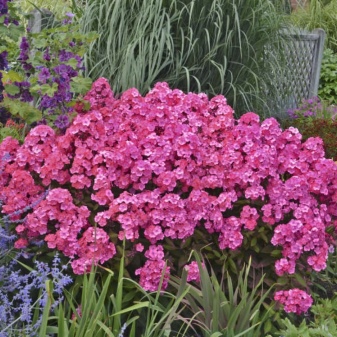
Looks beautiful in a garden bed both in a single planting and in a multi-tiered composition. When cut, looks great in bouquets.
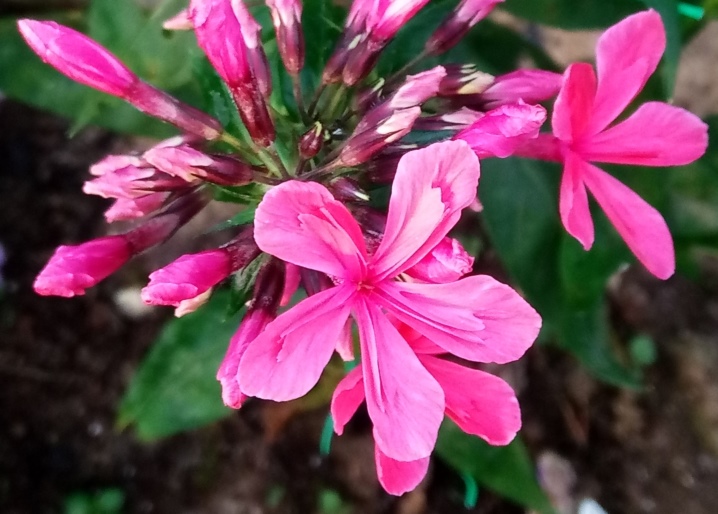
Choosing a place and landing rules
The variety prefers open, sunny areas, but feels good in partial shade. Attention should also be paid to the protection of the landing site from the wind, since with strong drafts during the period of abundant flowering, there is a possibility of breaking off the stems.

Phlox will grow best on fertile, medium loamy soils, well moistened.

This variety can be planted in spring and autumn. Still, spring planting is considered the best. After the snow melts, increased humidity remains, which contributes to a faster rooting of the plant. Concerns about temperature changes are unfounded - they do not pose a threat to the perennial. In central Russia, the optimal time for planting is from mid-April to the first ten days of May.
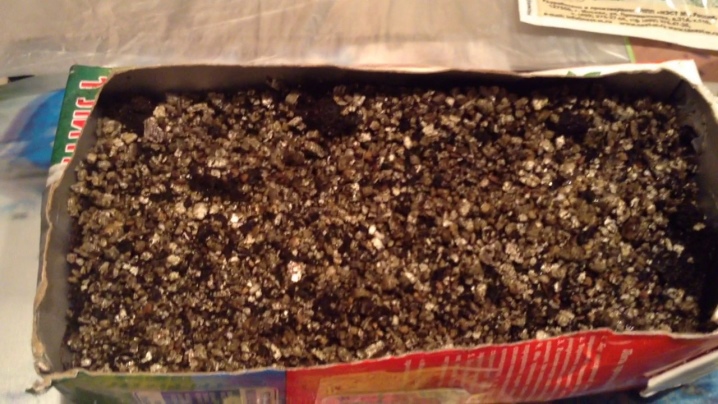
It is advisable to prepare the soil for planting in advance. In the fall, when digging the earth, add compost; with high acidity, you can add lime.
In the spring, the planting site should be dug again, to form a flower bed. The depth of the planting pits should be 20–30 cm. Since the variety is undersized, the optimal interval for planting several specimens is 35–40 cm. Compost or humus is placed at the bottom of each pit, a small amount of complex mineral fertilizer is added and watered.

The bush is buried 3-4 cm into the ground from the root collar and sprinkled with earth. In one place, the variety can grow quietly for 5-6 years.

Care
"Cleopatra", like all phloxes, loves hydration. Insufficient watering immediately affects the appearance. The plant will not grow up to varietal characteristics, and the inflorescences will be small and devoid of pomp.
The water consumption required for paniculate phlox is 15–17 liters per 1 square meter. m. It is better to water in the evening, when the moisture will evaporate more slowly. Water must be poured at the root. After watering, it is recommended to loosen the soil.

When weeds appear on the flower bed, they should be weeded out so that they do not take the nutrients needed for the plant from the soil.

It is advisable to feed phloxes 3 times. When young shoots appear, nitrogen-containing fertilizers must be applied. During the budding period (2 top dressing) and in the fall, after the end of flowering (3 top dressing), fertilize with superphosphate and potassium sulfate in the amount of 30–40 g per 1 sq. meter.


When cold weather comes, it is necessary to prune phlox, leaving 1–3 cm from the root. Sprinkle the middle with copper sulfate. You can cover it on top with a layer of spruce branches, straw or peat. Burn the cut off parts.

Reproduction
The best ways to propagate the Cleopatra phlox are by dividing the bush and planting seeds. Since the variety is undersized and with rather fragile stems, propagation by rooting cuttings is not the best option.

Dividing the bush
After 5-6 years, the bush usually grows strongly, and it should be updated so that varietal characteristics are not lost. The procedure is carried out in spring or autumn. In spring, you can start dividing immediately after the snow melts, and in autumn - in the first half of September.
The bush is dug up, the soil is removed from the roots and divided into parts so that there are 2-3 stems on each division. The division is best done with a knife or a pointed shovel. The resulting parts are immediately planted in pre-prepared landing pits. New bushes will delight you with abundant flowering in the same season.
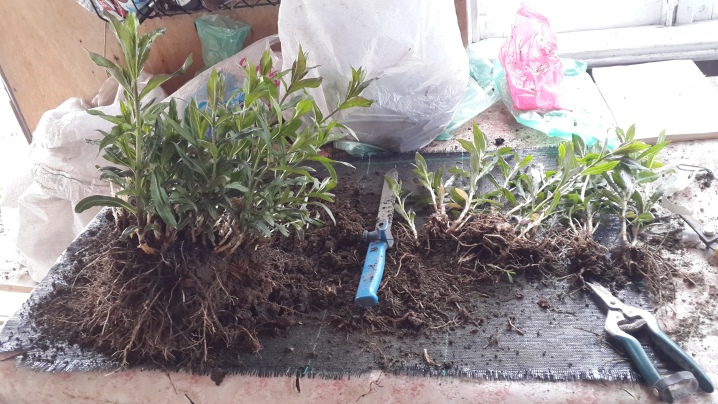
Seed method
It is more labor intensive, since the seeds need stratification. You can collect the seed pods after the leaves begin to wither and dry out, and the pods will acquire a brown tint, but have not yet dried. The boxes are cut off, brought into the house for several days. When they dry up, they are placed in a box with sand and taken out to an unheated room.

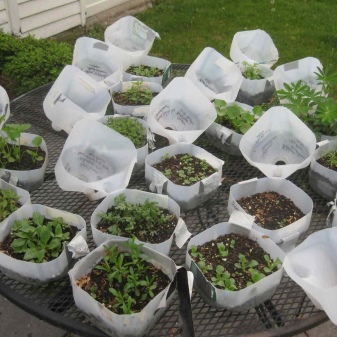
It is better to start sowing seeds in containers in March (one month before the expected planting in the ground). The seeds are sown on the soil surface in plastic containers with holes in the bottom to prevent moisture stagnation. Spray and cover with foil. Every day, the film is removed for a short time and the resulting condensation is removed. With this shallow sowing, the seeds germinate in a week. When two leaves appear, the seedlings dive.

An open ground transplant is best done in May.

Benefits of the variety
Phlox "Cleopatra" is very persistent and rarely gets sick. Unlike other species, it is practically not affected by powdery mildew and leaf spot.
Bright color, long and lush flowering make it possible to combine perfectly in compositions with a large number of plants. Even a single-planted bush will bring revitalization to the garden lawn.
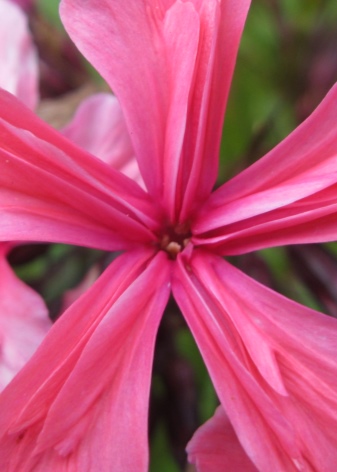

With proper care and watering, the plant is sure to delight gardeners with its charm and splendor.
More details about the Cleopatra phlox can be found in the video below.







































































































The comment was sent successfully.